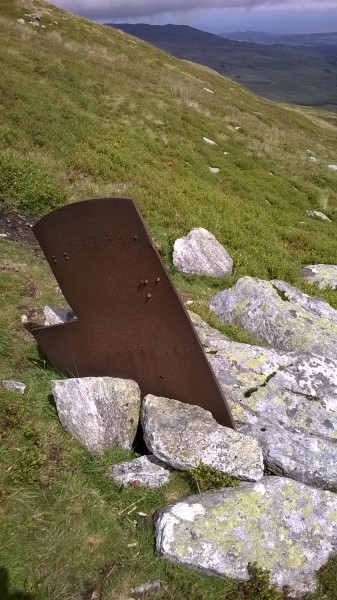de Havilland Mosquito F.B. Mk.VI HX862 of No.60 OTU, RAF, crashed on Drum near Conwy on the 25th September 1944

| Frederick George Johnson | Flight Lieutenant RCAF | Pilot | Killed |
| Jack Else | Flying Officer | Navigator / Radar Operator | Killed |
The crew of HX862 were on a night intruder exercise from RAF High Ercall in Shropshire as part of their night-fighter training course. Their briefed route was to take them to Prestatyn before heading west-northwest across the Irish Sea at low level. The first leg was to be flown at 3,000ft with the second at a height of 500ft, the height at which a lot of intruder missions were flown into Europe.

They took off at 00:22 and once airborne set course for Prestatyn. At 00:40 Flt Lt Johnson reported to the Sector Controller that they were at 3,000ft on a course of 320 at 240 mph, nine minutes later the aircraft was seen by a Royal Observer Corps post flying on a course of approximately 285 at about 3,000ft which the observer thought would just allow the aircraft to clear the mountains to the west. Within two minutes the aircraft flew into the eastern side of Drum near Conwy at around 2,300ft and was completely destroyed.

The crash was seen by one of the Observer Posts and was quickly reported to the RAF through the local controller at Wrexham. The RAF Mountain Rescue Team at Llandwrog were notified and set out at 01:30 collecting the local Police Constable from Tyn-y-Groes on their way up to Mellynllyn where they had decided to establish their search base. After first searching on Foel Fras the team moved further north and at 08:30 located the crash site on Drum. The members of the team who had remained at the search base were then instructed to move the vehicles to the farm at White Hart near Rowen so a stretcher party could ascend the mountain from there to recover the bodies of the two crew. They were then taken to the RAF station at Mona on Anglesey before being sent for burial.

It was concluded that the crew had made their first turn too early over a point to the south-east of Prestatyn, from ground observations most likely over Sealand near Chester and begun descending to their briefed height for the second leg.




